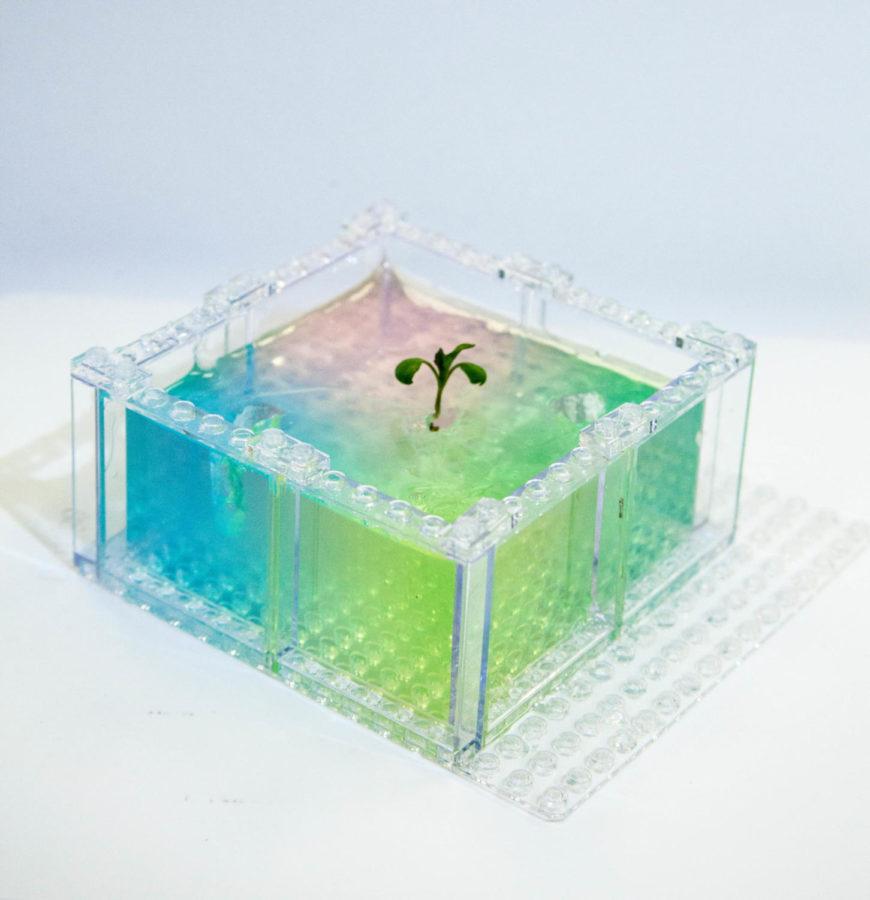ISU researcher uses Legos to study plant growth
Ludovico Cademartiri, assistant professor of materials science and engineering, came up with the idea to use transparent Legos for his study of plant and root growth.
July 7, 2014
From model towers to bridges, Legos are used to express imagination and creativity. At Iowa State, they were used for much more than just that.
Ludovico Cademartiri, assistant professor of materials science and engineering, and his team used Legos as a simple solution to studying plant environments.
Cademartiri said he had been thinking about how to study plant and root growth in various environments and soil compositions since 2007, and he came up with the idea to use Legos for his study about three years ago.
At the time, the idea did not seem like it would be a success, but Cademartiri decided to give it a try. Though he had used the Lego toys as a child, he said he didn’t know how many things for which they were useful.
Legos provided a less expensive, adaptable material for the experiment. Cademartiri said that experimenting with plants requires large amounts of material for building their environment, creating the need for something cost effective yet still capable. Legos were the perfect material for the task and were relatively easy to attain.
Specifically, transparent Legos were used to create the boxes for the environment of the plants being studied. They were also used for creating casts in the gel around some of the plants. The casts were used to generate chemical gradients that affected the plants’ environment. The Legos also provided barriers in the structure of the experiment.
“You get really familiar with your system because you are building it yourself— putting it together brick by brick,” said Kara Lind, a graduate student in materials science and engineering who contributed to the project. “That’s not always the case in other experiments.”
Cademartiri believes that a tool should be accessible to everyone by being simple and robust. In using Legos, the experiment was able to be conducted without having an out of proportion budget.
Tools like these will impact the way scientists are able to perform their studies, Cademartiri said. As an engineering project, the group was able to find a way to control the environment, but at some point its ideas could be used by others, such as plant scientists, to aid their studies.
“It sounds simple, but it’s not,” Cademartiri said. “Developing simple things is not simple.”
Lind said that through her involvement with this experiment, she learned that research can be easier if you just look around at everyday materials.
“My research isn’t difficult, but yet it still makes an impact because it is using simple tools that people have overlooked … whether they are chemists, microbiologists, plant scientists, or even an engineer, they could also be a high school student,” Lind said. “We want tools that anyone can use so people can start doing research.”
Both Cademartiri and Lind were taking on a new challenge with this experiment. For Lind, the experiment presented the challenge of working with plants. She said that working with plants for the first time in an experiment meant confronting contamination and working with sterilization.
For Cadmartiri, it was very different from any other project he had worked on as a materials chemist. He said he used his toolbox of knowledge within materials chemistry to apply it to a different field for the Lego project.
“I’ve always been interested in many things,” Cademartiri said. “Largely, I work on something if I think I can make a contribution, if I believe the problem is important, and if I believe that I have good ideas on it.”

















